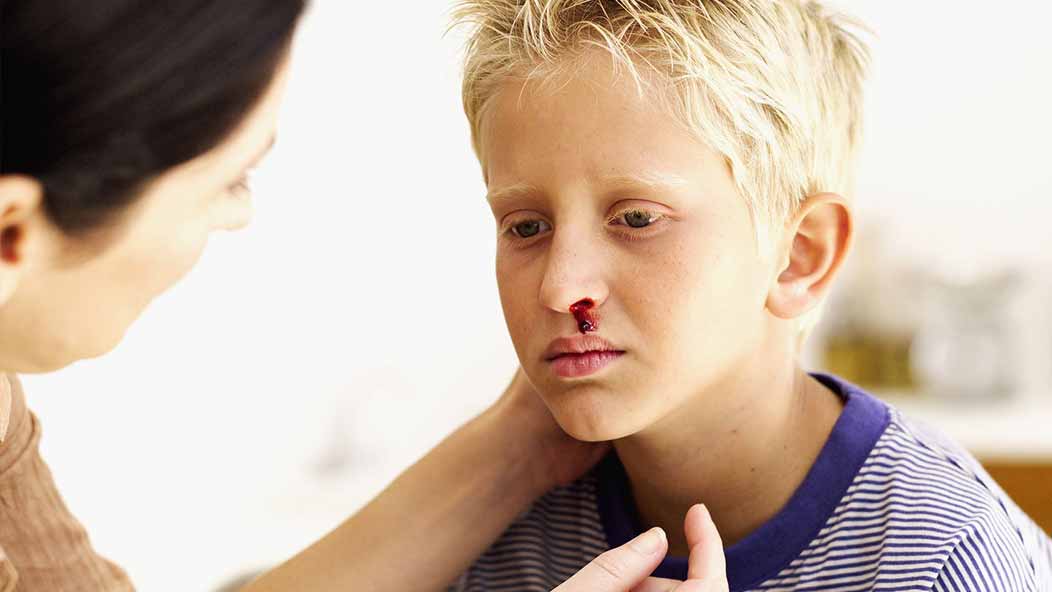Join Our eNewsletter!
Subscribe to our monthly newsletter to receive encouraging advice to help you lead a healthy lifestyle.

What to Do When Your Child Has a Nosebleed
July 25, 2020
Some preschoolers may have frequent nosebleeds. It’s usually neither abnormal nor dangerous but can be frightening. When blood flows down from the back of the nose into the mouth and throat, your child may swallow a great deal of it, which may cause vomiting.
If your child has a nosebleed, do the following:
- Keep your child’s head elevated. Avoid tilting the head backward so the child doesn’t swallow blood.
- Next, carefully pinch the sides of your child’s nose, gently squeezing the softer cartilage part of the nose, rather than the hard, boney part. Keep pressure on the cartilage, but not squeezing hard enough to cause pain. Ask your child to breathe through his mouth, while you apply light pressure to help stop the bleeding.
- Continue squeezing for about 5 minutes. That’s how long it typically takes for the bleeding to stop as little blood clots form.
- Release the pressure after 5 minutes and wait, keeping your child quiet. When you do release the nose, do so gradually and slowly to prevent the very elastic cartilage you’ve been squeezing from springing open and disturbing the little clots you’ve just created. If the bleeding hasn’t stopped, repeat these steps.
If the bleeding continues or if your child has frequent nosebleeds, call your pediatrician. Your doctor may ask you to add other treatments for your child, such as ice packs and other remedies to help stop the bleeding.

World-class doctors
We believe “changing the way health cares” is a promise to treat every patient like our only patient.
